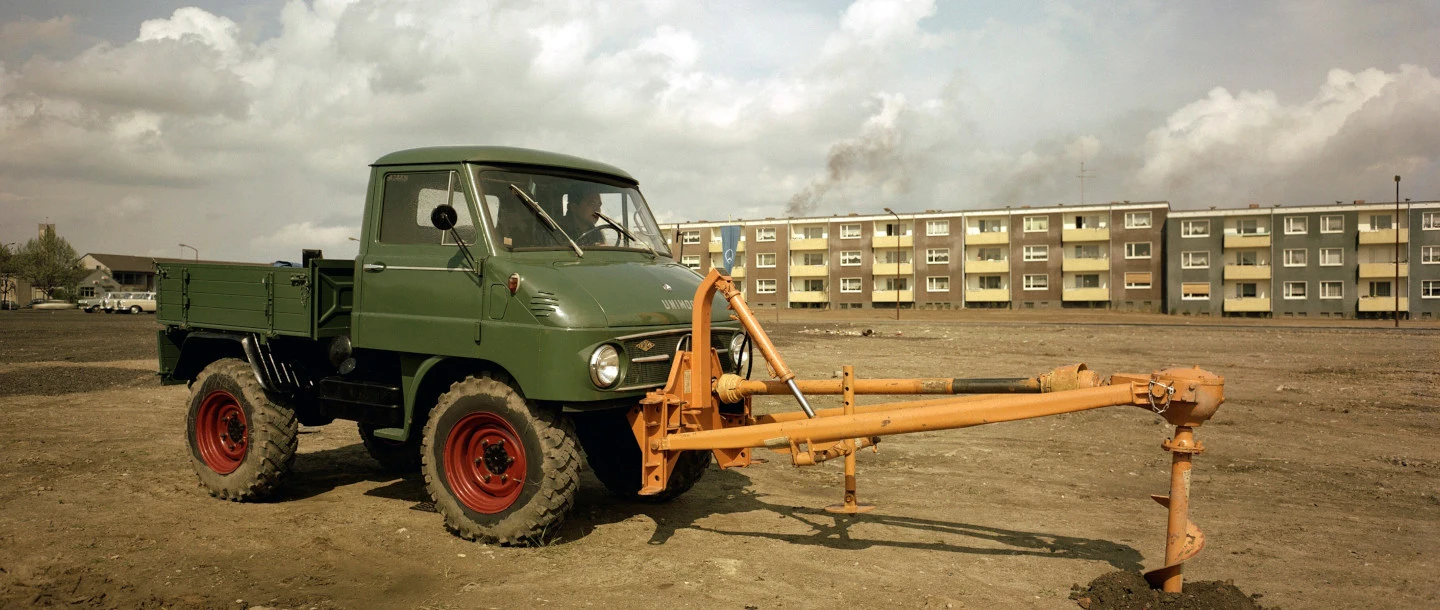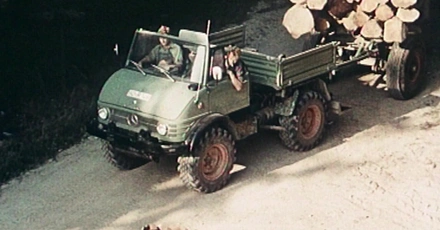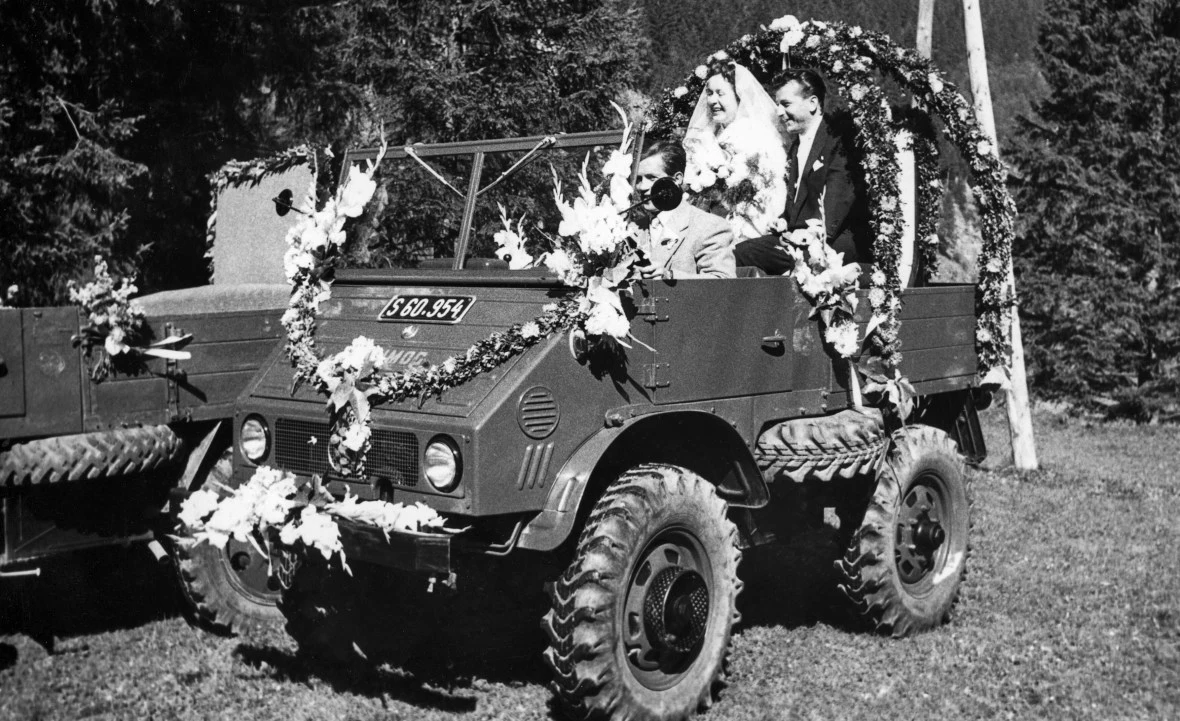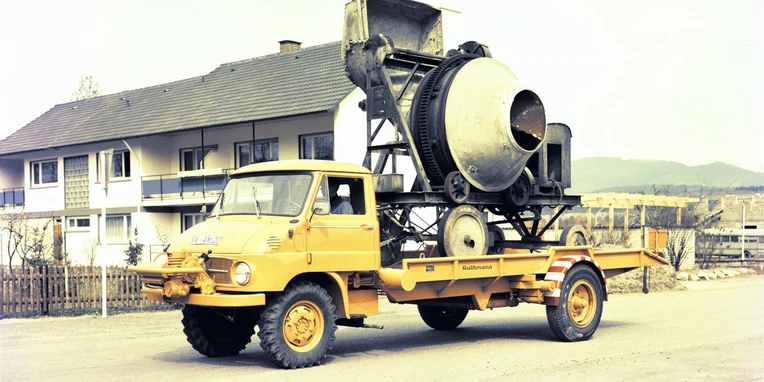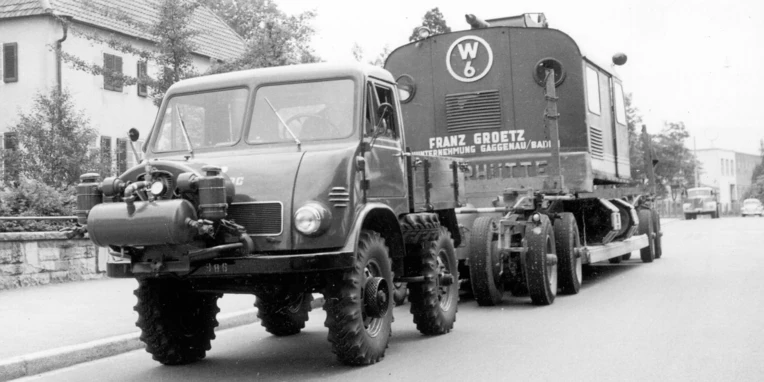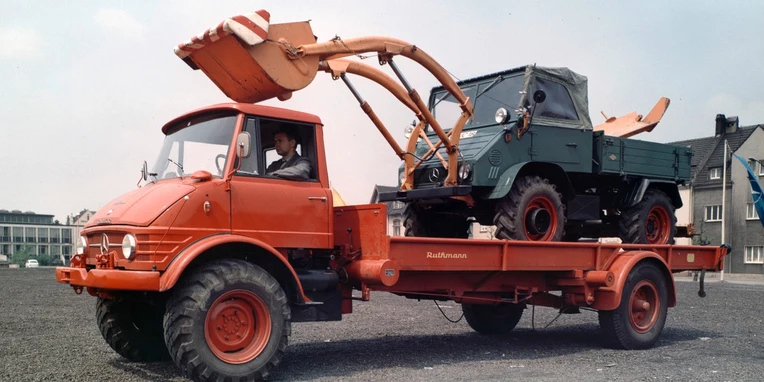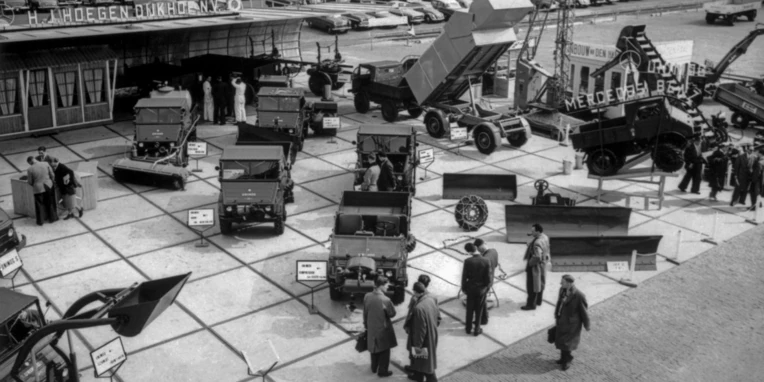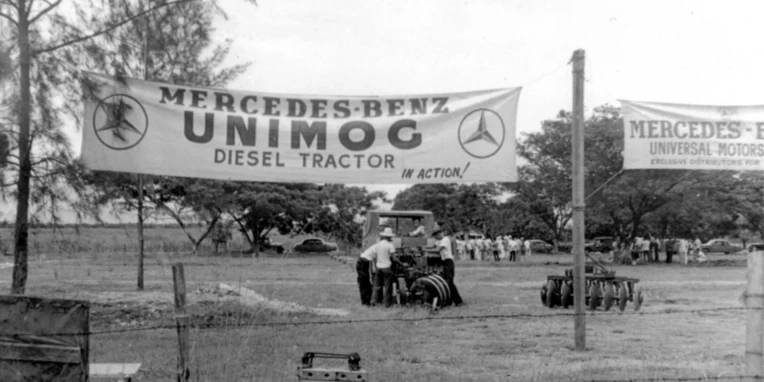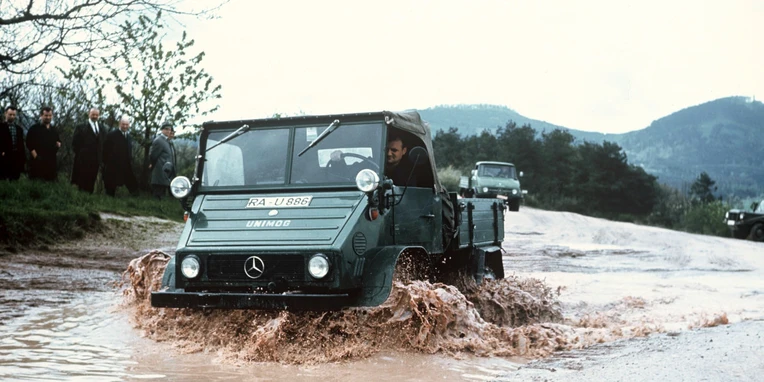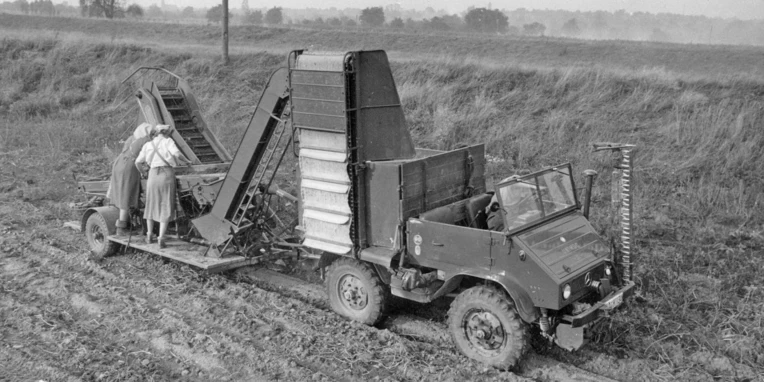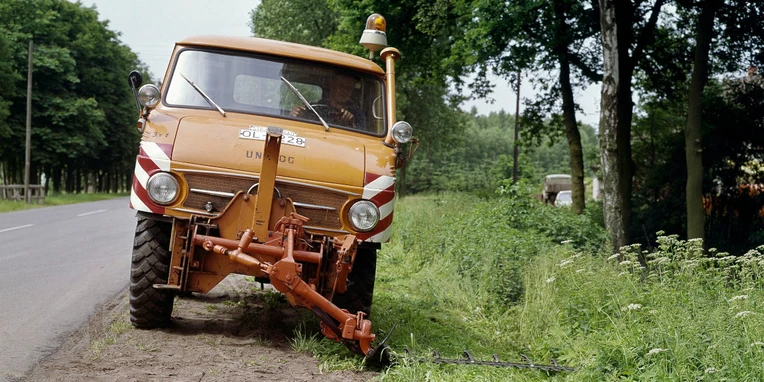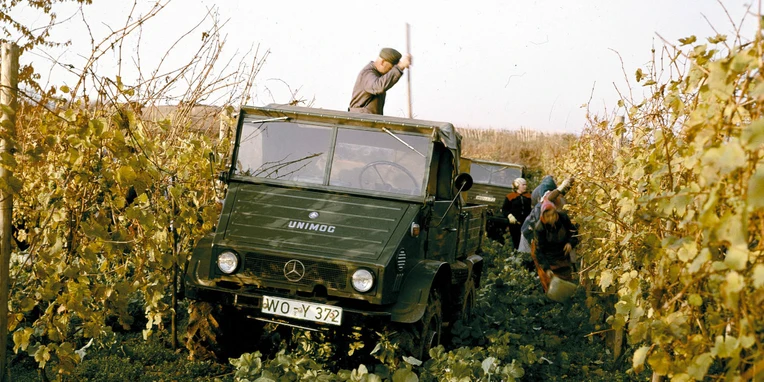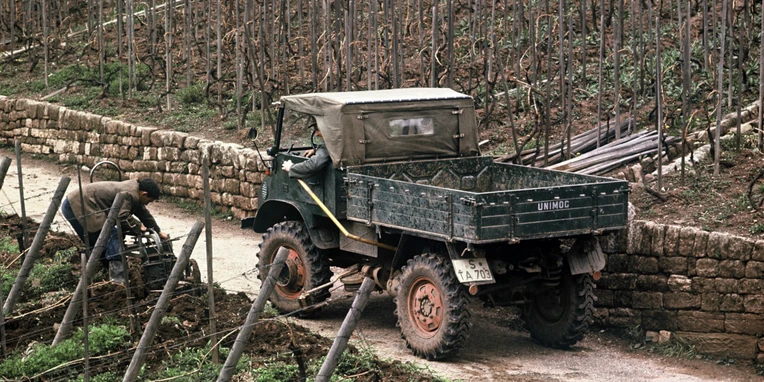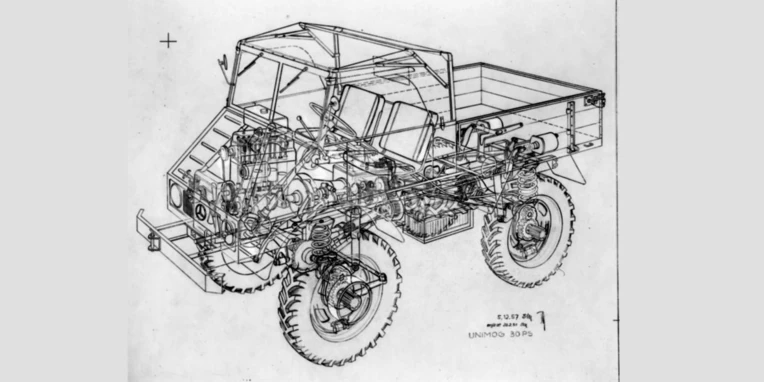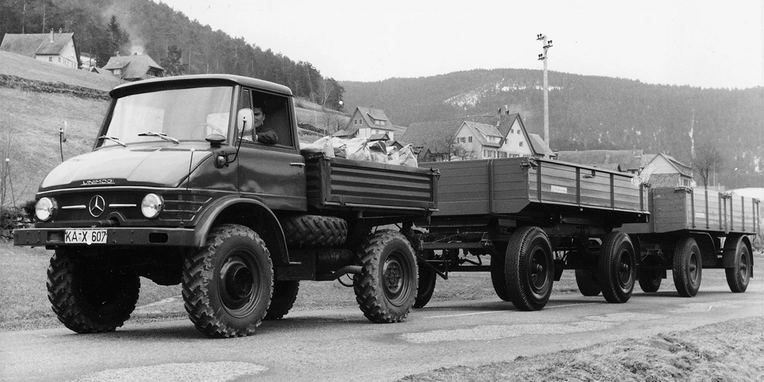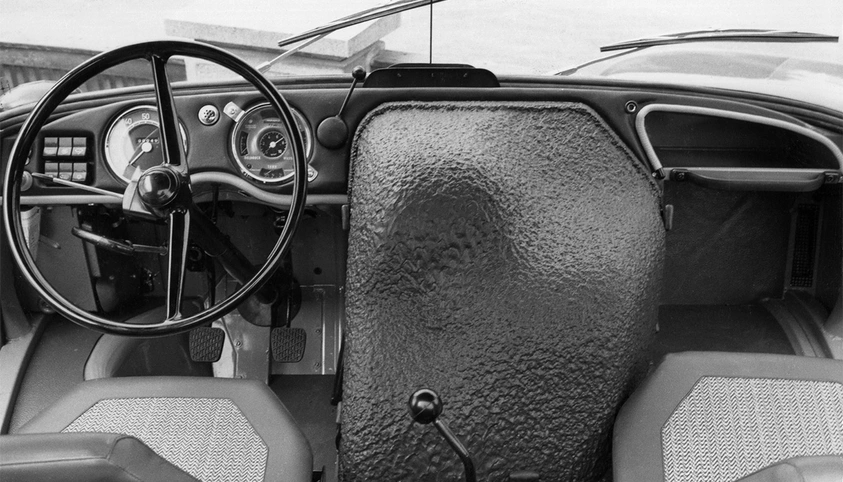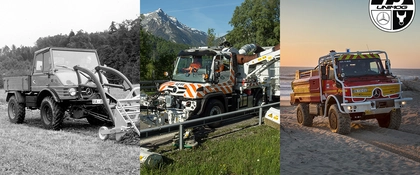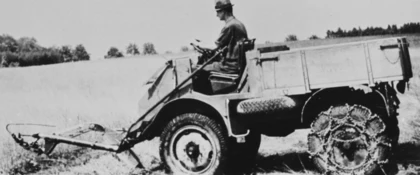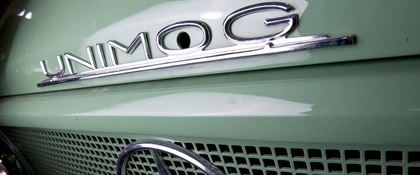1956–1965 | The complete Unimog model range is created.
For 75 years now the Unimog has stood for efficiency, flexibility and legendary off-road capabilities like no other vehicle. In the second part of our chronicle, we show you the famous series which defined the Unimog in the second decade of its existence – and provided the basis for the wide product range which characterises the all-rounder from Mercedes-Benz to this day.
The Unimog 411 series adds extra performance.
At the 1956 DLG (German Agricultural Society) exhibition in Hanover, Daimler-Benz presented the Unimog series 411, the successor to the 401/402 series. Its important characteristic was greater performance. Its 30 horsepower provided that crucial extra to serve higher agricultural requirements. But comfort was not neglected either: in addition to improved seats, reinforced shock absorbers were fitted to the 411 series.
As with the previous model, a short and a long wheelbase version were available ex-works. The long wheelbase model was extremely popular, because from 1957 it could be equipped with a newly developed cab. The all-steel cab provided much more space than before, and the equipment features specific to Daimler and a design with rounded edges were impressive at the time, setting standards in the commercial vehicle segment.
Thanks to its agility, its relatively high speed and its excellent off-road performance, the Unimog was used increasingly for transportation. The power take-off shafts available at the front and rear provided users with the best possible conditions for the flexible use of saws, pumps, cable winches and other equipment.
